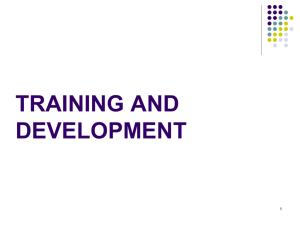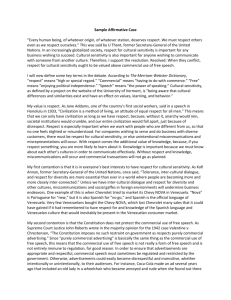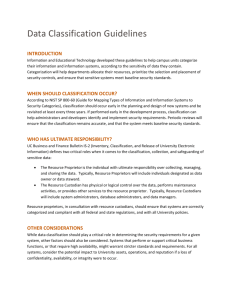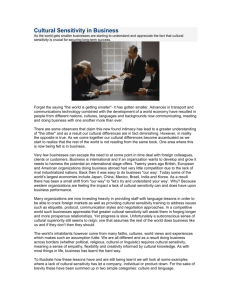Sensitivity Analysis of Biochemical Systems: Metabolic Control
advertisement
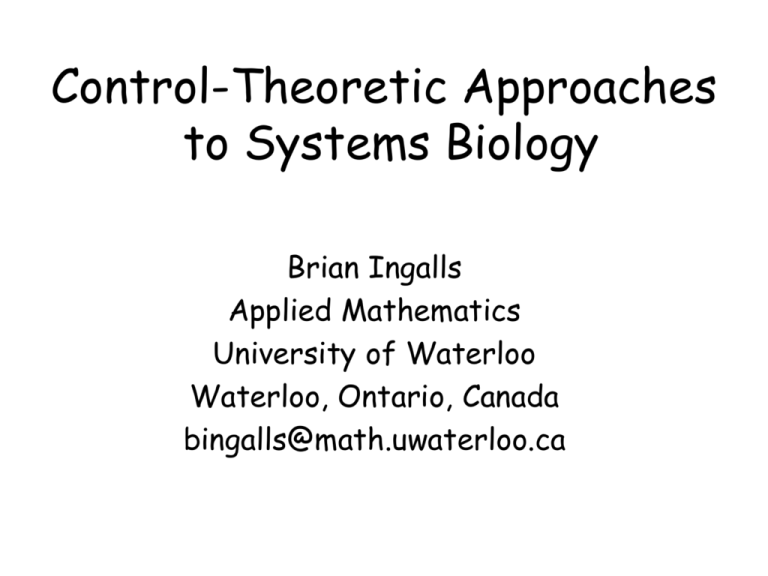
Control-Theoretic Approaches to Systems Biology Brian Ingalls Applied Mathematics University of Waterloo Waterloo, Ontario, Canada bingalls@math.uwaterloo.ca Engineering Control Theory and Biology? Engineering Angle: “Evolutionary Design” vs. Human Design http://www.aip.org/pt/jan00/berg.htm p53 and Mdm2 logic elements Kohn & Pommier, Biochem. Biophys. Res. Comm., 2005 Eric Davidson's Lab at Caltech (http://sugp. caltech.edu/ endomes/) endomesoderm specification in the sea urchin Strongylocentrotus purpuratus How is biochemical feedback implemented? Chemical vs. Biochemical Networks Chemical Network (all possible reactions) Chemical vs. Biochemical Networks Chemical Network (all possible reactions) + Enzyme catalysis (specific reactions) Chemical vs. Biochemical Networks Chemical Network (all possible reactions) + Enzyme catalysis (specific reactions) + in vivo conditions (open system) Chemical vs. Biochemical Networks Chemical Network (all possible reactions) + enzyme catalysis (specific reactions) + in vivo conditions (open system) + enzyme regulation (allostery) Enzyme-Catalysed Reactions http://www.uyseg.org/catalysis/principles/images/enzyme_substrate.gif Competitive Inhibition catalytic complex substrate enzyme product catalytic site competitive inhibitor inactive complex Allosteric Regulation enzyme allosteric site allosteric inhibitor catalytic site substrate conformational change integration of allosteric signals How can enzyme activity be chemically regulated? By inducing conformational changes http://xray.bmc.uu.se/~mowbr ay/ http://huntingtonlab.cimr.cam.a c.uk/movies.html Outline 1) Static Negative Feedback: Robustness and Trade-offs in Sensitivity 2) The Frequency Response 3) Dynamic Negative Feedback: Robustness and Trade-offs in Sensitivity Section 1: Static Negative Feedback: Robustness and Trade-offs in Sensitivity arXiv:0710.5195v1 A Signal Transduction example: MAPK pathways as amplifiers One interpretation: amplifier MAPK Pathway: negative feedback negative feedback Suggested roles of feedback: Enhanced deactivation Adaptation to persistent signalling Generation of oscillations Alternative hypothesis (H. Sauro): negative feedback amplifier Amplifiers: Static behaviour Feedback amplifiers Feedback amplifiers: effect of internal variation Feedback amplifiers: effect of external disturbance But! increased robustness comes at a price: sensitivity to variation in system components: sensitivity to variation in feedback components: Conservation Law: Sensitivity in A + Sensitivity in F = 1 MAPK: Is the negative feedback in place to enhance amplifier behaviour? Section 2: The Frequency Response: the Spectral Density as Sensitivity Analysis J. Phys. Chem B 2004 Dynamic Sensitivity Perturbation Asymptotic (long time) Response ???? Frequency Response The asymptotic response of a linear system to a sinusoidal input is a sinusoidal output of the same frequency. system This input-output behaviour can be described by two numbers for each frequency: • the amplitude (A) - System Gain • the phase () - Phase Shift Perturbation Asymptotic Response y1 + y2 + y3 +... Fourier Transform sum of sinusoids u1 + u2 + u3 + ... Inverse Fourier Transform sum of responses y1 + y2 + y3 +... Plotting Frequency Response Gain Bode plot: gain and phase-shift plotted separately Frequency steady state sensitivity = zero frequency gain EE jargon: DC gain Frequency Response of MAPK system sensitivity of MAPK to ligand Gain (dB) No Feedback Feedback Frequency Section 3: Dynamic Negative Feedback: Robustness and Trade-offs in Sensitivity Application to Glycolysis J. Doyle, J. Gonçalves, BI H. M. Sauro, and T.-M. Yi Basic Model of Glycolysis Disturbance F Cellular Activity ATPase Glucose PFK HK Lower Glycol. n N ATP + + ATP Model details: Dynamics based on conservation of mass rate of production Reaction rates: (Michaelis-Menten kinetics) rate of consumption Model Simulations Basic Model: Conservation of Sensitivity Bode’s Integral Formula Bode's Sensitivity Integral: a performance constraint Biological systems have evolved under the same constraints: tight regulation may result in unwanted behaviours (oscillations, disease states,...) Sustained Glycolytic Oscillations Hess and Boiteux, 1968 Glycolysis: Turbo-charged positive feedback Bode’s Integral Formula follows from Jensen’s formula: 0 log S ( ) d log k log k log S () Right hand side terms may aggravate or alleviate the trade-off Extended Model of Glycolysis – Positive feedback Disturbance F Cellular Activity ATPase Glucose PFK HK Lower Glycol. + + n ATP 0 log S ( ) d log k log k log S () ATP Aggravated Trade-Off Conclusions The overall "robustness" of a system is constrained by conservation laws. Regulation by feedback control has the effect of redistributing the sensitivity of a system. The redistribution of sensitivity can be in terms of components or time-scales (or both). Synthetic Biology: Forward Engineering of Biochemical and Genetic networks Genetic Toggle Switch Gardner, T.S., Cantor, C.R., and Collins, J.J. (2000). Construction of a genetic toggle switch in Escherichia coli. Nature 403, 339–342. http://www.cellbioed.org/articles/vol4no1/i1536-7509-4-1-19-f02.jpg Genetic Oscillator: the Repressilator Elowitz, M.B., and Leibler, S. (2000). A synthetic oscillatory network of transcriptional regulators. Nature 403, 335–338. http://www.nature.com/cgi-taf/DynaPage.taf?file=/nature/journal/v420/n6912/full/nature01257_r.html Construction of computational elements (logic gates) and cell-cell communication Genetic circuit building blocks for cellular computation, communications, and signal processing, Weiss, Basu, Hooshangi, Kalmbach, Karig, Mehreja, Netravali. Natural Computing. 2003. Vol. 2, 47-84. http://www.molbio.princeton.edu/research_facultymember.php?id=62 iGEM: international Genetic Machine Competition



